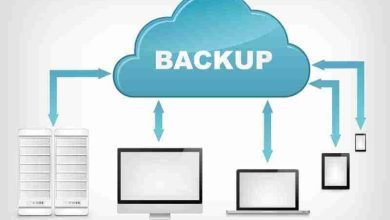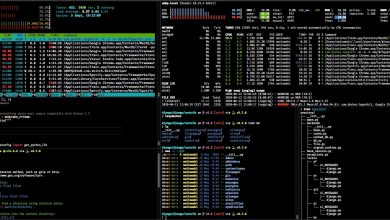Step-by-Step Guide to Setting Up a Robust Backup System

Outline for “Step-by-Step Guide to Setting Up a Robust Backup System”
| Heading | sub-heading |
|————-|——————|
| Introduction to Data Backup | Importance of Data Backup |
| Understanding the Risks of Data Loss | Common Causes of Data Loss |
| Key Terminology in Data Backup | Glossary of Backup Terms |
| Types of Backup Systems | Full Backup, Incremental Backup, Differential Backup |
| The Role of Backup Storage | Local vs. Cloud Storage |
| Factors to Consider When Choosing a Backup Solution | Budget,storage Needs,Accessibility |
| analyzing Your Data Needs | Evaluating what to Back Up |
| The First Step: Planning Your Backup Strategy | Setting Backup Goals and Objectives |
| Hardware Requirements for Backup System | Necessary Devices and Tools |
| Software Requirements for Backup System | Essential Backup Software Options |
| Step-by-Step Setup of Local Backup | Creating a Local Backup |
| Step-by-Step Setup of Cloud Backup | Setting Up Cloud Storage Solutions |
| Automation: The Key to a Successful Backup System | Scheduling Regular Backups |
| Testing Your Backup System | Importance of Backup Testing |
| Monitoring Backup Processes | Ensuring Interaction and Alerts |
| Data encryption: Ensuring Protection | Benefits of Encrypting Backups |
| Understanding Backup Procedures | Review of Backup Methodologies |
| Building a Backup Disaster Recovery Plan | developing Contingency Plans |
| legal and Compliance Considerations | Backup Practices for Businesses |
| The Role of Redundancy in Backup Systems | Why Backup Redundancy Matters |
| Keeping your Backup System Updated | Regular Maintenance and Updates |
| Common Backup Mistakes to Avoid | Learning from Pitfalls |
| The Future of Data Backup | Emerging Technologies in Backup Solutions |
| Conclusion: Creating a Resilient Backup System | Recap of Key Points |
In today’s digital era,the essence of maintaining a robust backup system cannot be overstated. A Step-by-Step Guide to Setting Up a Robust Backup System is not merely a technical necessity; it is an insurance policy against data loss that potentially arrives when least expected. For businesses and individual users alike, a strong backup system is vital for ensuring data integrity and continuity. This guide provides an organized approach, demystifying the process and empowering individuals to take control over their data security.
Data loss can unfold in numerous manners – accidental deletion, hardware failures, or even natural disasters, and thes risks are real, affecting both personal lives and businesses. The stakes are high; without appropriate backup strategies, the prospect of losing critical data is alarming. Hence, the understanding of why data backup is essential becomes quite apparent. It is indeed not just an option; it is a necessity that guarantees peace of mind,ensuring that one can bounce back from unforeseen problems.
The importance of different keywords and terminologies associated with data backups provides a strong foundation for understanding. It’s crucial to decipher the jargon surrounding this practice. For instance,understanding terms like “incremental backup,” “disaster recovery,” or “data redundancy” can empower users to make informed decisions regarding their backup systems.
When setting up a backup system, the types of available options merit careful consideration. Users can choose from various types of backups: full backups, incremental backups, and differential backups. Each variant has its pros and cons, and gauging wich one suits a specific need is pivotal.Full backups offer comprehensive security by capturing all data, but thay require considerable storage space and time. Meanwhile, incremental backups save only the data that has changed since the last backup, making them quicker and more storage-efficient but perhaps riskier if previous backups fail.
Selecting the right storage solution is another critical aspect of developing a robust backup system. This choice boils down to deciding between local and cloud storage options. Local storage offerings, such as external hard drives and network-attached storage (NAS), provide immediate access, yet they might potentially be vulnerable to physical damage.Cloud storage, on the other hand, allows for remote access and ofen comes with built-in redundancy, making it a favored choice for many users.
Analyzing current data needs is not only a practical step but an essential one. It begs the question: just what exactly should be backed up? By identifying critical files, documents, multimedia, and database content, users can prioritize their backup protocol. The first step in this analysis involves planning goals and setting objectives, which gives direction to the backup strategy.
The hardware and software requirements for a robust backup system must be evaluated, as the right tools make a meaningful difference. Various devices, from simple USB drives to elegant NAS solutions, play distinct roles in this ecosystem. Similarly, software options range from built-in OS utilities to sophisticated third-party solutions designed to automate the backup process.
the actual steps involved in the setup of both local and cloud backups may seem daunting at first, but with a clear approach, they are entirely manageable. Creating a local backup can involve basic file drag-and-drop techniques or utilizing specialized software that handles the procedure with minimal supervision. Setting up cloud backups typically requires creating an account with a provider and uploading critical files – the learning curve is relatively gentle, and the rewards are immediate.
To complement a solid backup system, automation becomes crucial. Scheduling regular backups takes the burden off the user, ensuring that no matter how busy life gets, data protection remains a priority. Though, without proper testing of the backup system, this strategy can lead to nightmares. It is essential to routinely assess backup processes to verify that data can be recovered as anticipated.
Monitoring backup performance adds another layer of assurance.Establishing alerts for failed backups means that issues can be addressed before they escalate into a crisis. Data encryption also warrants emphasis, safeguarding the sensitive information stored within backup systems. Encryption ensures that even if data is intercepted, it remains out of reach of prying eyes.
Understanding backup procedures enables informed decision-making regarding which methodologies to adopt.Furthermore, developing a disaster recovery plan encapsulates a comprehensive strategy that outlines how to respond effectively in the event of data loss. Legal and compliance requirements must not be neglected either,especially for businesses that must adhere to specific data protection regulations.
Redundancy in backup systems serves a vital purpose. Rather of relying solely on one backup source, using multiple methods ensures that if one solution fails, another can step in to prevent potential data loss. Keeping a backup system updated requires ongoing maintenance and awareness of emerging technologies and trends that can bolster this essential aspect of data management.
As technology continues to evolve, backup practices will also shift. Some emerging trends include enhanced cloud functionalities, AI-driven backup solutions, and integration of IoT devices into personal and business environments.
In summation,creating a resilient backup system requires a comprehensive understanding of the tools and strategies available. Knowledge is power; being informed about proper backup protocols fosters confidence in managing data effectively. Beyond mere survival, a well-crafted backup system empowers individuals and organizations alike to navigate the digital landscape with resilience and assurance that, come what may, their valuable data is safeguarded.
This content provides a glimpse into the detailed exploration of setting up a robust backup system as outlined in the table above. The remaining sections promise further in-depth discussions on each heading, ensuring that readers walk away not just with the know-how, but also with the confidence to implement a system that stands the test of time.




